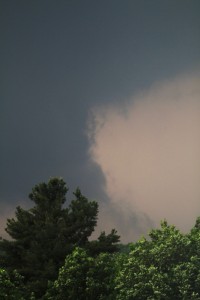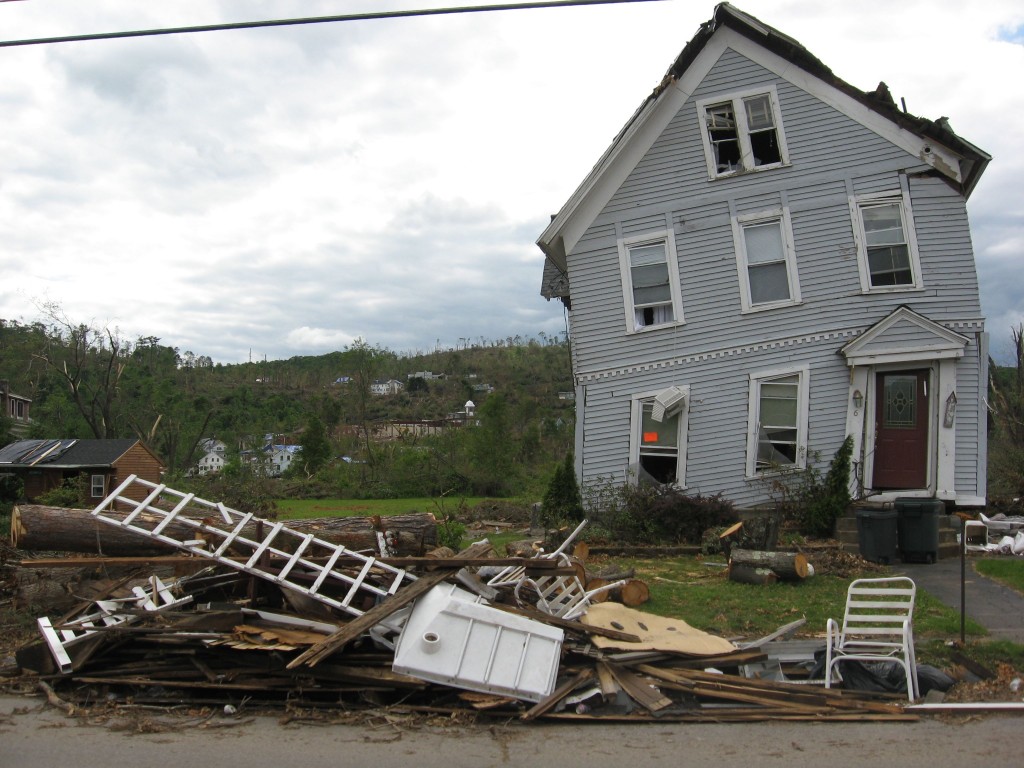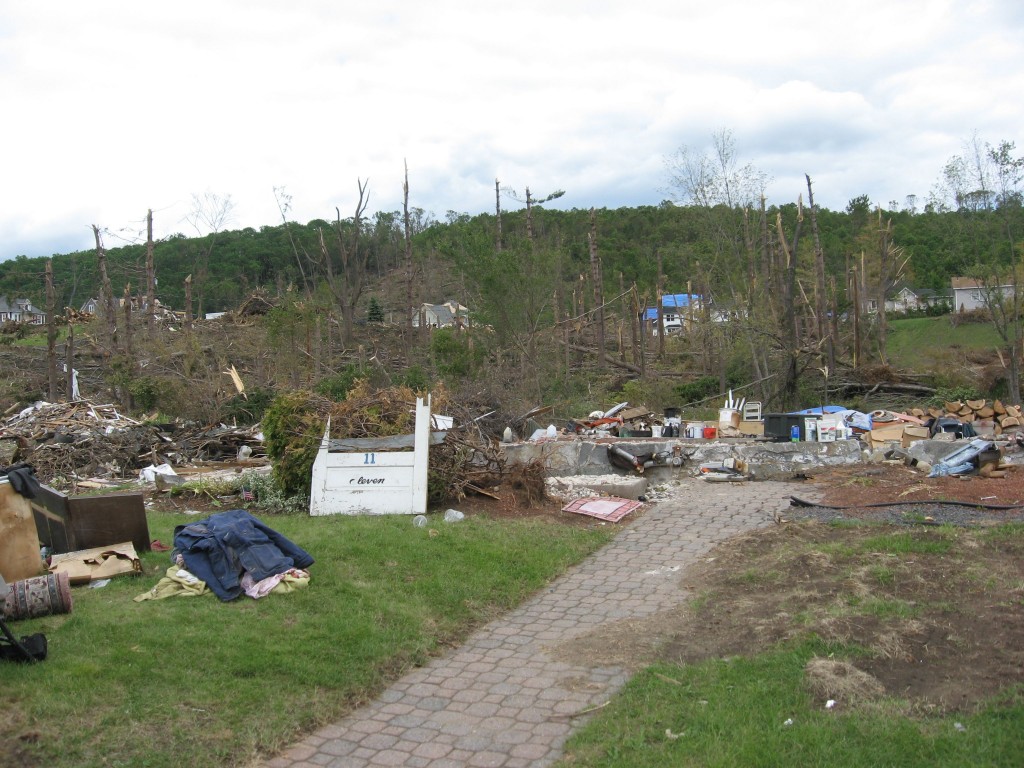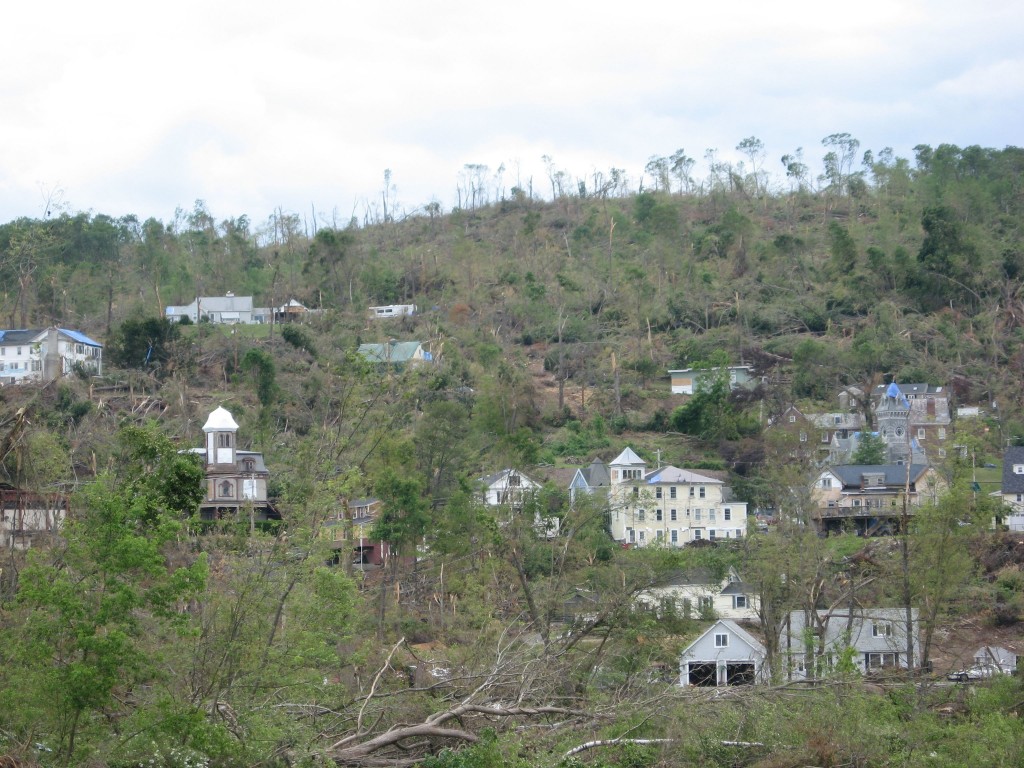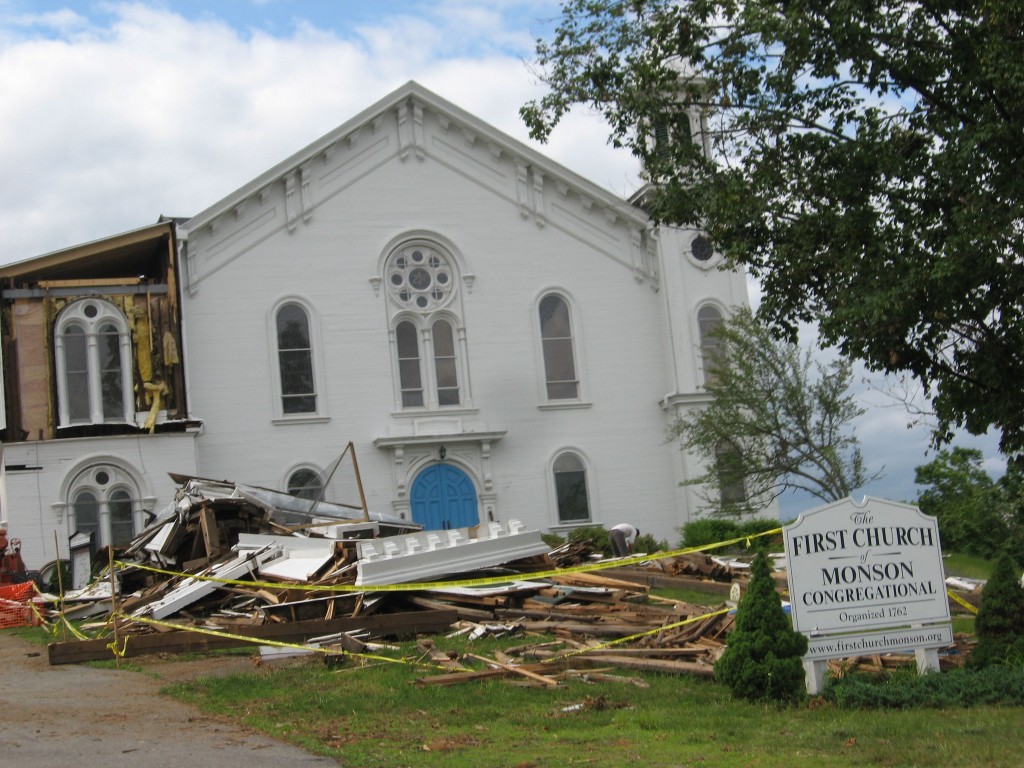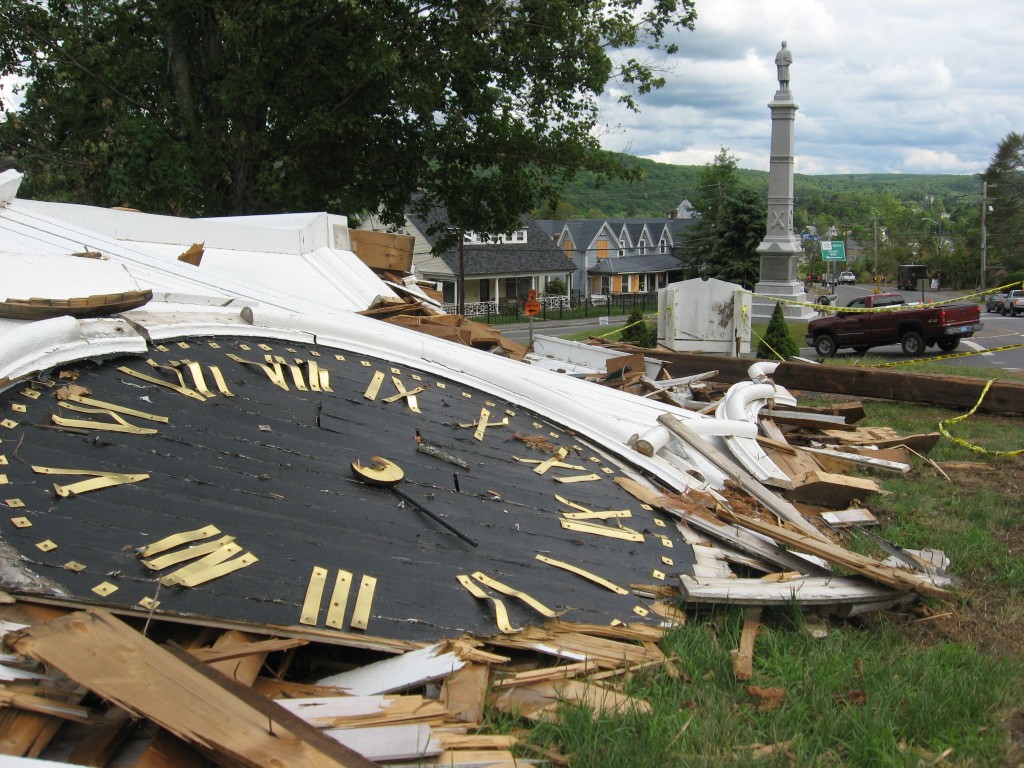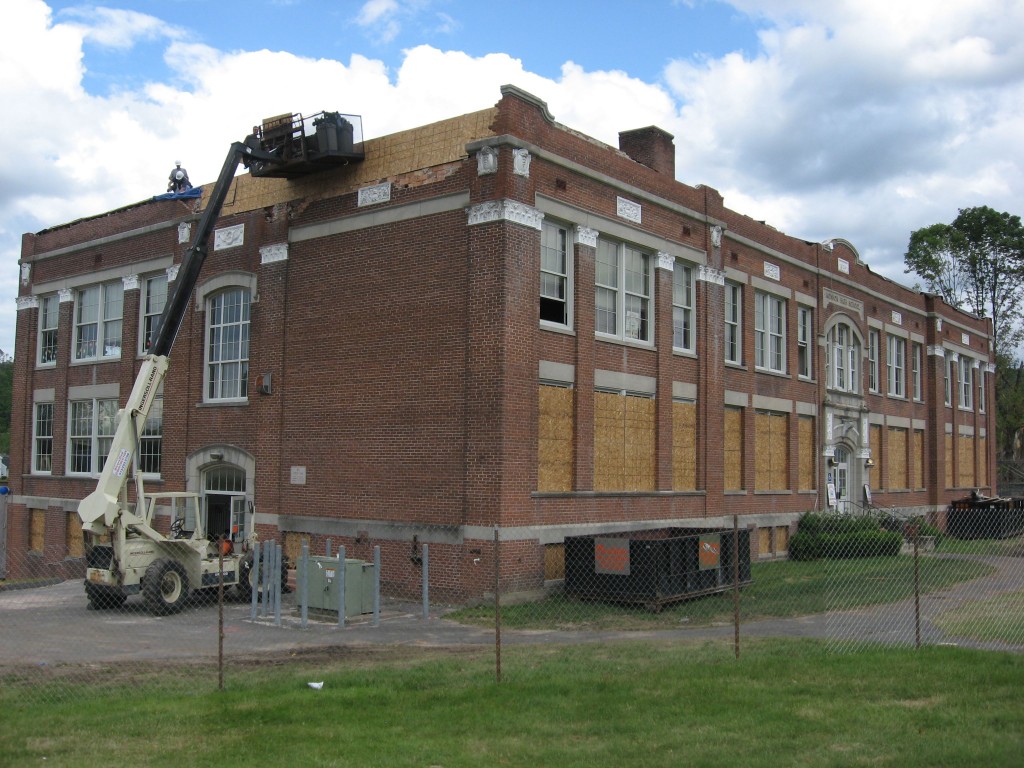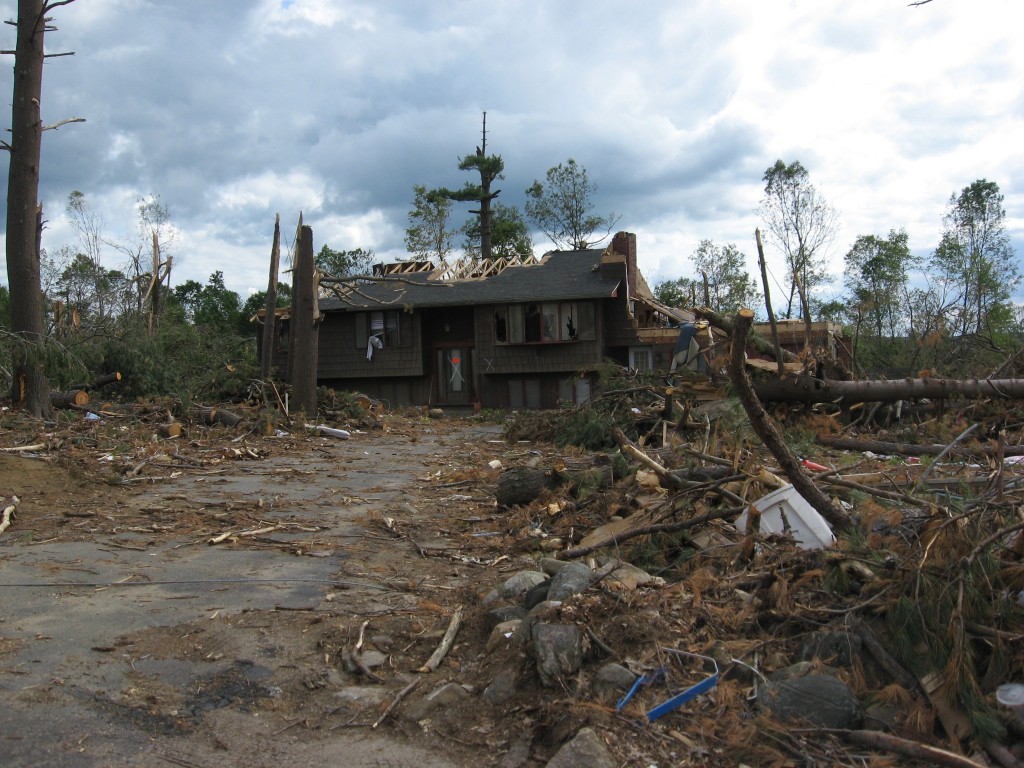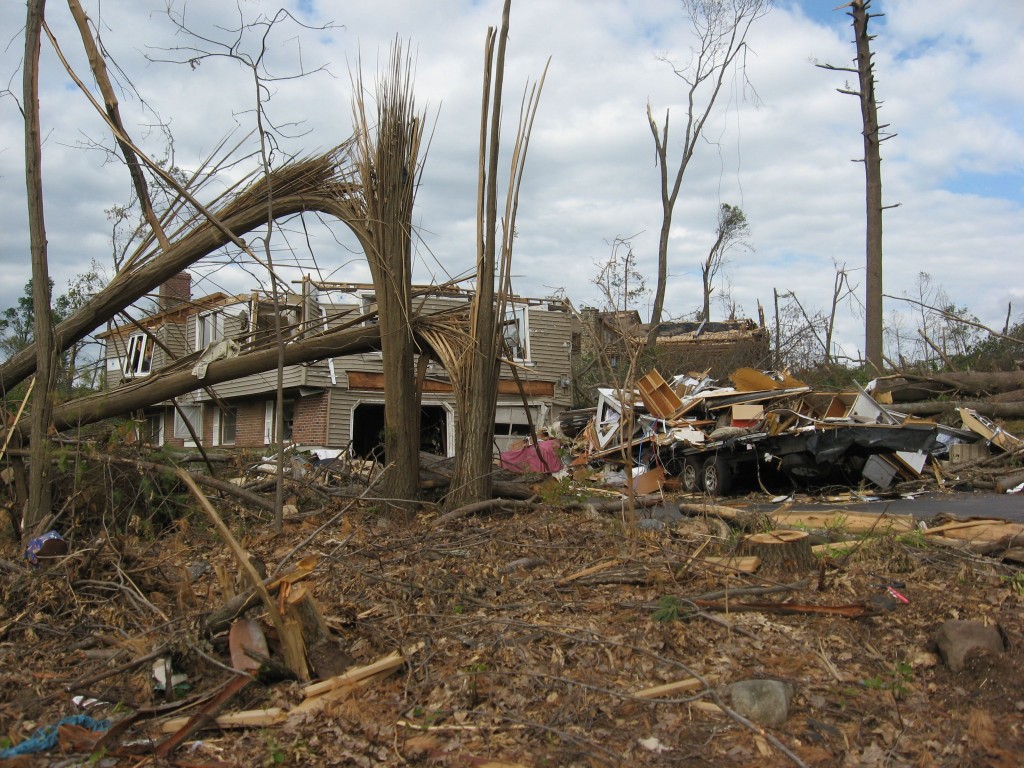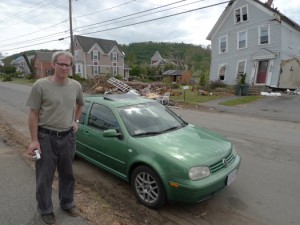TREES TWISTED, CRACKED AND BROKEN IN PIECES, THE TORNADO LEFT A PATH OF DEFORESTATION IN ITS WAKE. Â HERBACEOUS WOODLAND PLANTS GROWING IN THE ONCE SHADY FOREST WITHER IN THE SUN.
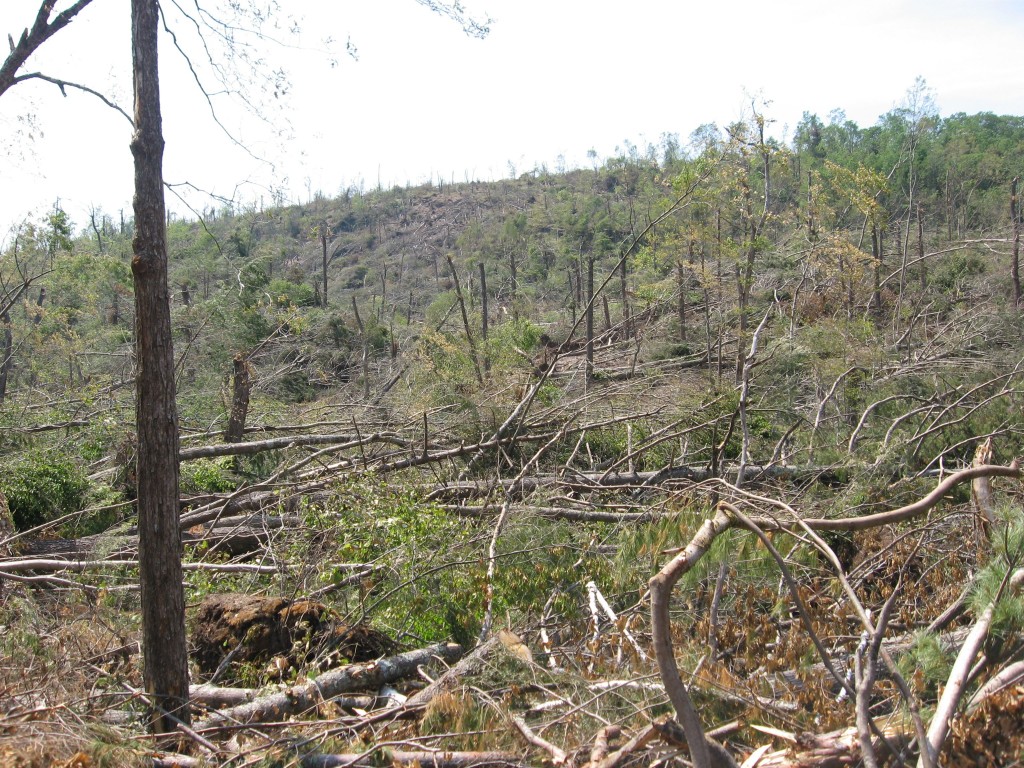
Part II of the special coverage of the Massachusetts tornado by Sanguine Root staff writer Sean Solomon.
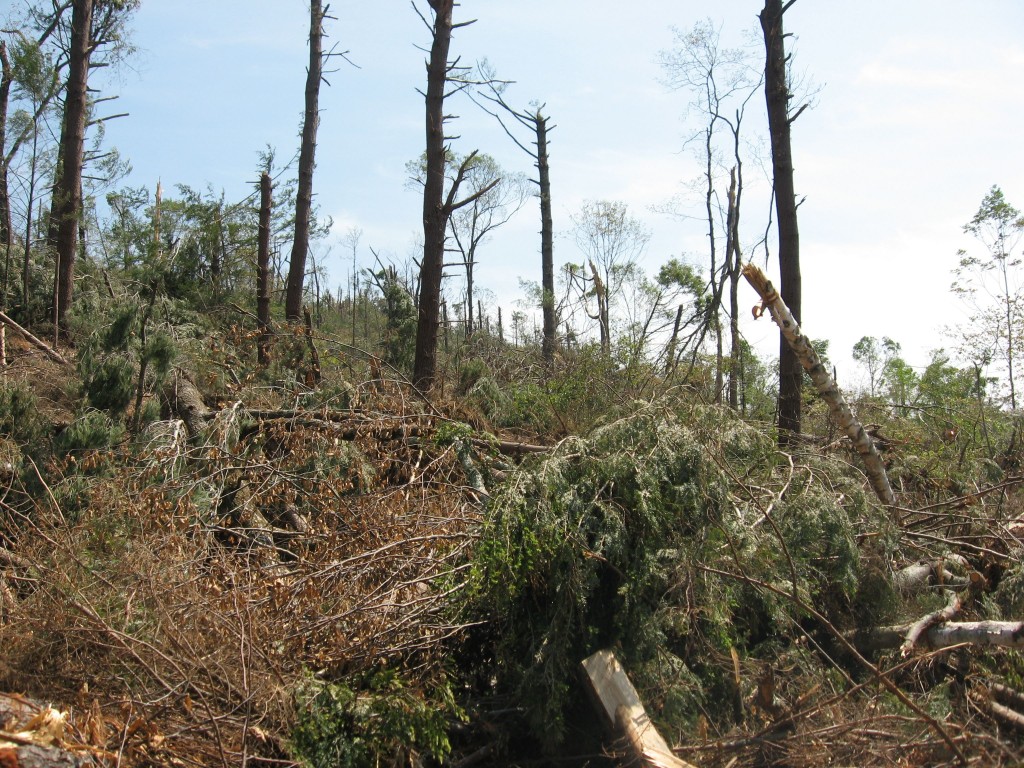
The path of the tornado reached its peak width in the Brimfield State Forest.  To see this was a shocking sight.  This has always been a shady, wooded area, so thick with trees that it was dark and mysterious, and was the quintessential forest for me as I was growing up.  To see this destruction is unsettling. These trees were part of my upbringing, and have created the backdrop for my appreciation of forests. Like the beautiful Victorian houses of the town of Monson, the trees on this hillside  were the example of what forest is to be, like what an elegant house is.  For the trees to have been ripped out like this is disorienting.
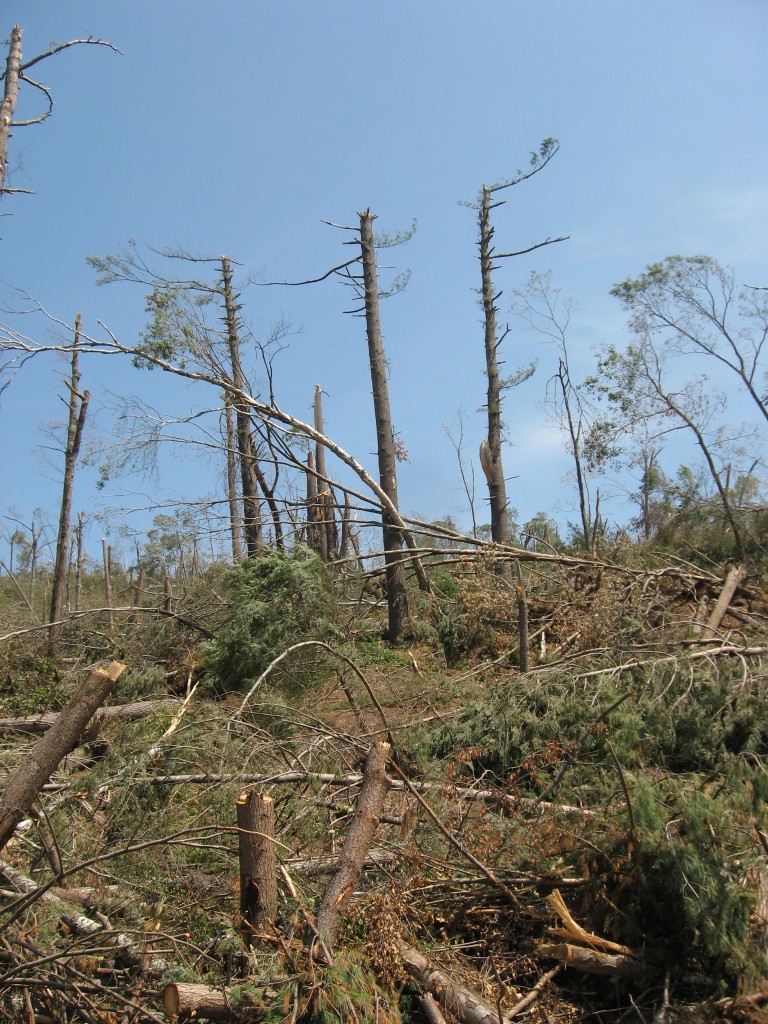
Is this what it has come to? Â Are we to expect more and more of these tornados in the future? We know that tornados do occur in this area, but rarely. Â Does the dramatic increase in atmospheric carbon dioxide have an effect in this? Â This would be a good time to come out and study this tornado. Â Now that the bigger trees are down, there will be effects on the land. Â The ferns and herbaceous shade plants are yellowing in the hot sun.
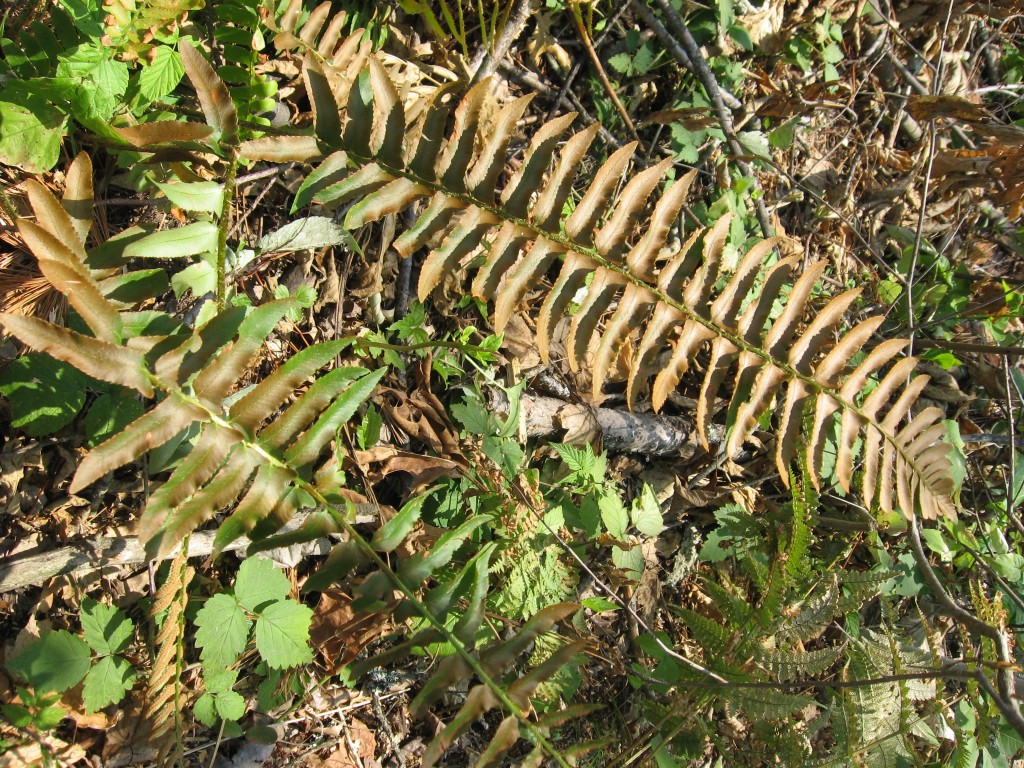
Here, Christmas fern (Polystichum acrostichoides) survived the tornado but is now exposed to so much sunlight, that it is turning brown.
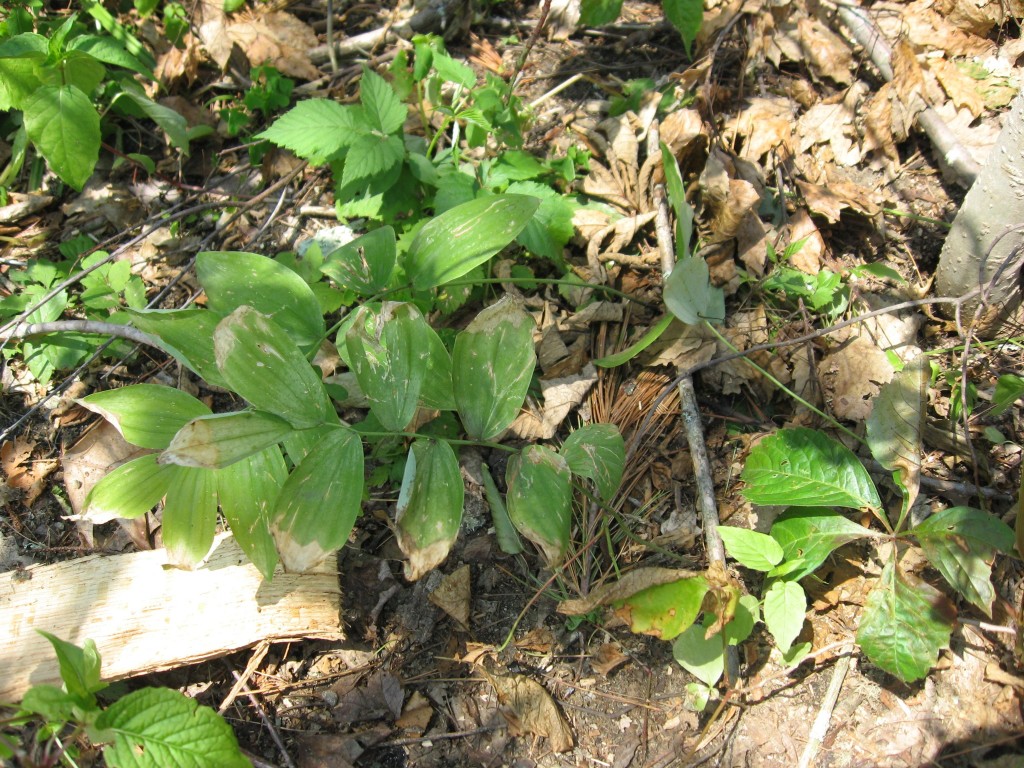
The woodland herbaceous plant, Smilacina racemosa, False Solomons seal, is also turning brown at the edges. (Top and bottom).
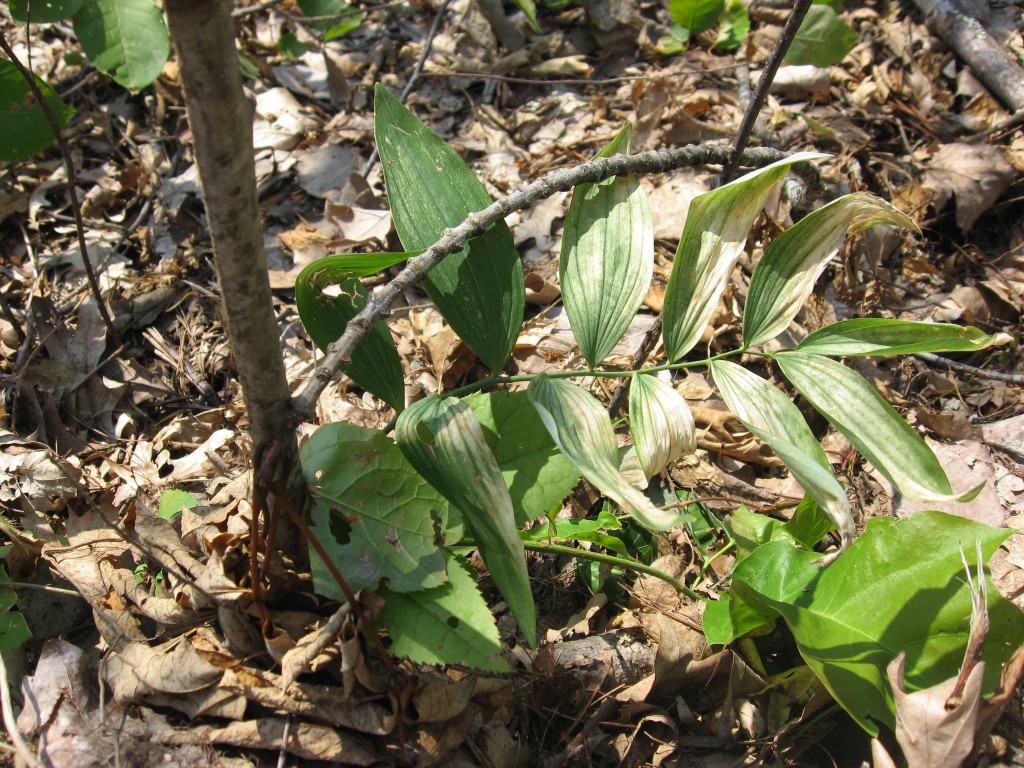
Change has come to this forest, and how it will manifest itself is up for speculation. Â Please feel free to throw in your two cents as to how it will pan out in the next 5 years, ten, and how about 50 and 100! Â This tornado’s path will be still evident in 200 years to the close inspection.
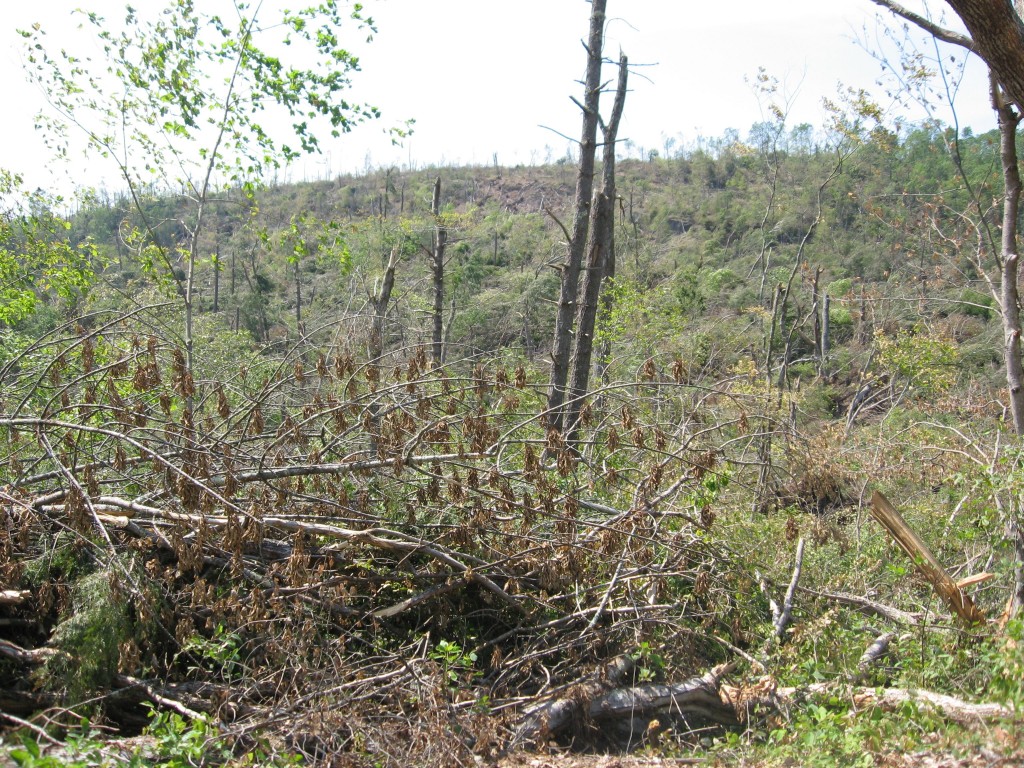
Many of the Oaks and Hickories will probably sprout new branches on top of the trunks and there will be some odd-shaped trees in 10 years, with thick trunks and lots of thin branches coming off the tops. Some of the wind-blown trees that have survived will be trees that have interesting angles and curves in the trunks, with straight tops.  Many young trees have survived this event and they will grow into the new forest.  Species such as birch and white pine may thrive in this new sunny environment, and they make take a more prominent place in the forest in the next twenty years.  There will also be some surprises.  Long dormant seeds may sprout and there  may be species making a presence not seen in many years.  There will also be a possibility of invasive, introduced species gaining a foothold in this disturbed environment, such as the Asiatic bittersweet and Japanese Knotweed.
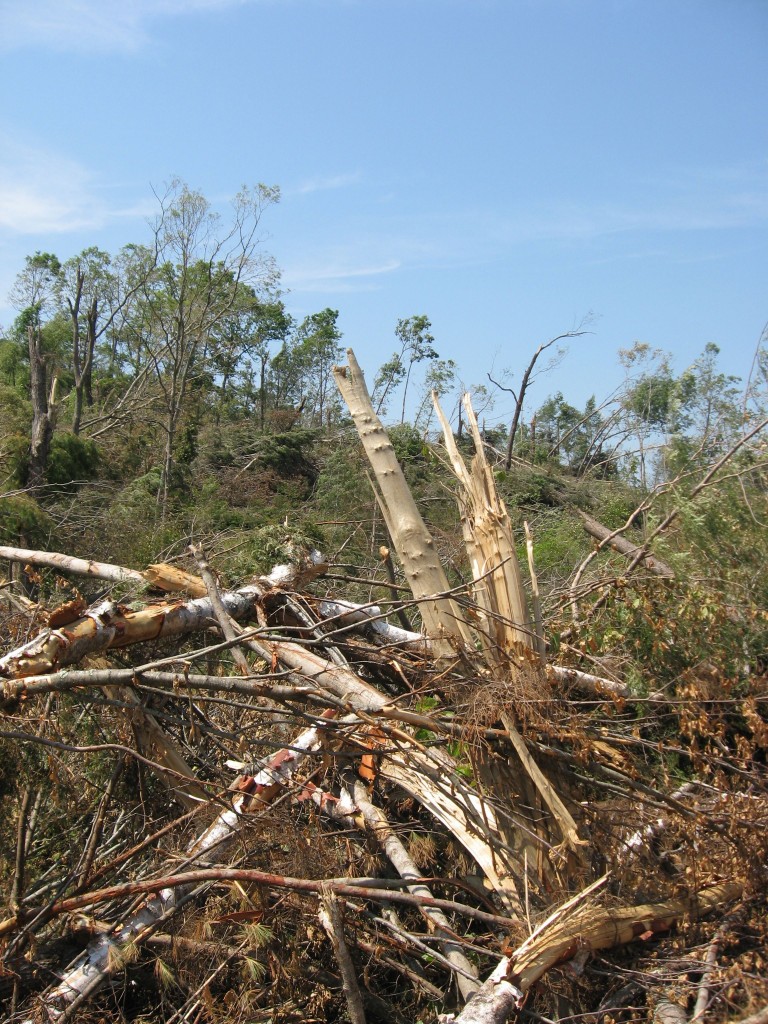
This last picture illustrates the amount of dead wood that now sits on the land. Â This poses a fire risk in the next few years ahead. Â One dry summer with all of this dry wood sitting around and any number of fire possibilities creates a huge potential problem. Â What can be done now to have a healthy forest regenerate, and for this to be a safe process? Â While the towns and city is re-built, the forest must also be considered.
As difficult as this has been and will be, the re-building and decision-making of the towns and forests presents a unique opportunity for  re-defining our role as citizens in a civic engagement as well as stewards of the natural environment we live amidst.



